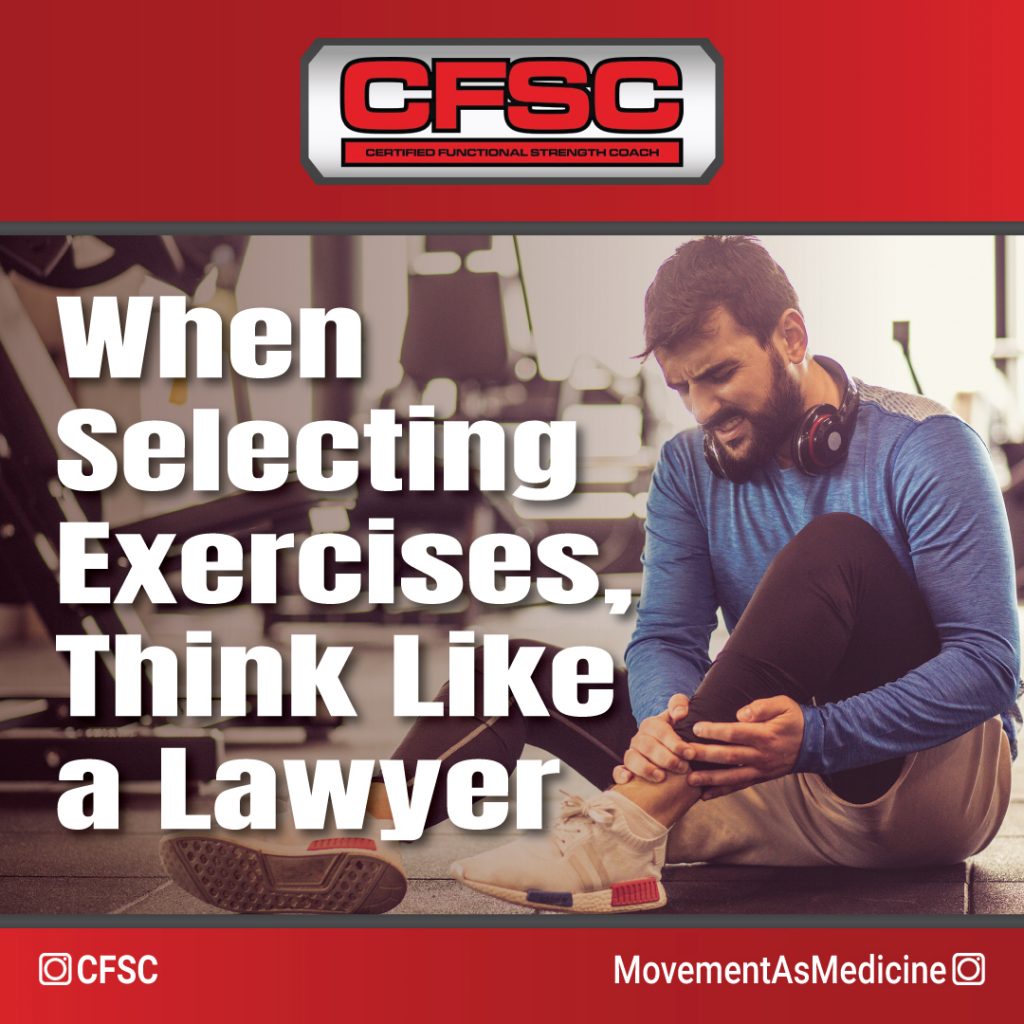When Selecting Exercises, Think Like a Lawyer
Coach Boyle is always reminding us to “think like a lawyer.” As coaches, when we assume responsibility for every injury that occurs in the gym, no matter the cause, we naturally select exercises and activities that greatly reduce the chance of injury – we think like lawyers.

Box jumps should be done on soft boxes. Wooden or metal boxes, or plates stacked on top of one another, are begging for an injury. If an athlete falls, scrapes the skin off of their shin, and gets a STAPH infection (seen it); or worse, the plates slip out from underneath and they fall and break their arm or neck, was it worth it? There are no Box Jump olympics. You don’t HAVE to do them. There are hundreds of other (safer) jumping drills that accomplish the same thing.
Flipping a tire. Why? Because it’s cool? ‘Cool’ and ‘good’ are not always synonymous. Why risk your spine flipping a tire when you can achieve the same outcome with proper deadlifts/squats, Olympic lifts, and/or sled pushing. And unless you’re competing in Strongman (tire flipping not optional), is the spinal flexion under heavy load worth it? Or, telling people to swing a sledgehammer. Good luck explaining that one to a jury when your client swings, misses, and shatters their tibia or worse accidentally strikes someone else.
Having clients and athletes throw med balls to each other? Is it worth a broken nose or a broken finger? Use the wall, or the ground, or don’t do them.
Back squats with a barbell? Unless you’re entering a Powerlifting competition, you don’t HAVE to back squat. There are plenty of other ways to strengthen your legs without putting your lower back at risk.
With all exercise comes risk. But if the risk is greater than the reward, should it be in your programming? For every exercise or activity you do, weigh both the goal (this gives us context) and the risks involved. If you can get the closer to your GOAL by using a different exercise (or lighter weights) with less risk, do that instead.
Remember, if you’re the one prescribing the exercise, you’re the one liable if things go south. Our number one goal as coaches is to provide a safe environment that nurtures learning in pursuit of the client or athletes end goal(s). If your exercise selection injures them, that’s time lost for them, money lost for you, and they’ll likely experience extended consequences as a result of the injury. Protect yourself, protect your client, and don’t associate ‘cool’ with ‘good’. Think like a lawyer.
My challenge to you is to go through your own programming and ask: Can I achieve my goals and get the SAME reward with lower risk by picking a difference exercise?
This article was written by Movement As Medicine co-owner and CFSC Coach Brendon Rearick. He can be contacted at brendonrearick@gmail.com